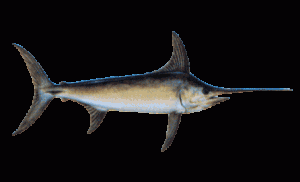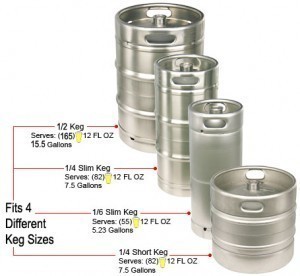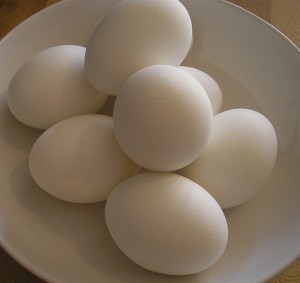Swordfish Sizes
The maximum size of the swordfish is 177 in. (455 cm).  The highest possible weight is 1400 lbs (650 kg). The heaviest swordfish on record is 535 kg. However, it is hard to find swordfish that is over 200 kg. The typical ones captured by fishery weighs around 100 to 150 kg. This fish s is the sole member of the Xiphiidae family.
The highest possible weight is 1400 lbs (650 kg). The heaviest swordfish on record is 535 kg. However, it is hard to find swordfish that is over 200 kg. The typical ones captured by fishery weighs around 100 to 150 kg. This fish s is the sole member of the Xiphiidae family.
Physical Characteristics
The swordfish has large eyes and a heavy, somewhat round body. The dorsal fin at the back resembles a crescent, while the next one is quite small. The anal fins look like the dorsal fins but not as big.
There are no ventral fins. A keel is at the point where the fins emerge. Regardless of the size of the swordfish, they do not have scales or teeth.
The name of course, is derived from its beak which looks like a sword. The beak is about 1/3 of the body length. It is sharp and pointed. The swordfish has a small, sharp lower jaw and a wide mouth.
The colors vary. Many are a silver white with touches of dark brown. In young swordfish, the jaws are of equal length. Their bodies are also more snakelike.
The females are bigger than the males. Studies indicate that a one year old female will weigh 4 kg and triple that the following year. At 4 years the female will tip the scales at 70 kg. At five years of age, it will be over 100 kg. However there are males that can go over 300 lbs. Swordfish can swim over 50 mph.
Lifespan and Distribution
Whatever the size of the swordfish, the lifespan is usually at least 9 years. They become sexually mature around 3 years of age.
The swordfish are found in the water column instead of the coastal sections. They are usually found 180 m to 580 m deep. They are found throughout the world in waters with temperatures over 15 C (58 F). They can however, swim at 10 C (50 F). Size seems to be a factor, because swordfish over 90 kg are never found in 18 C or below waters.
Behavior
Swordfish are solitary; they swim in solitude. Even in groups, they are separated by about 30 ft (30 m). The swordfish can also be found near the surface sometimes. The fish can also be seen jumping.
There are two theories as to why the fish jumps. The first is that it is trying to remove pests attached on its body. The second is that it is trying to startle smaller fish. By making smaller fish jump around, they will become easy prey.
Diet
Swordfish feed on smaller fish and squid. They can be seen attacking schools of fish, killing and consuming the fish around them. Their natural enemies are the shark and the killer whale.
The size of the swordfish, not to mention its aggressive nature as a fighter, has made it popular among sports fishermen. Although its population has gone down due to overfishing, restrictions are helping increase its numbers once again.





